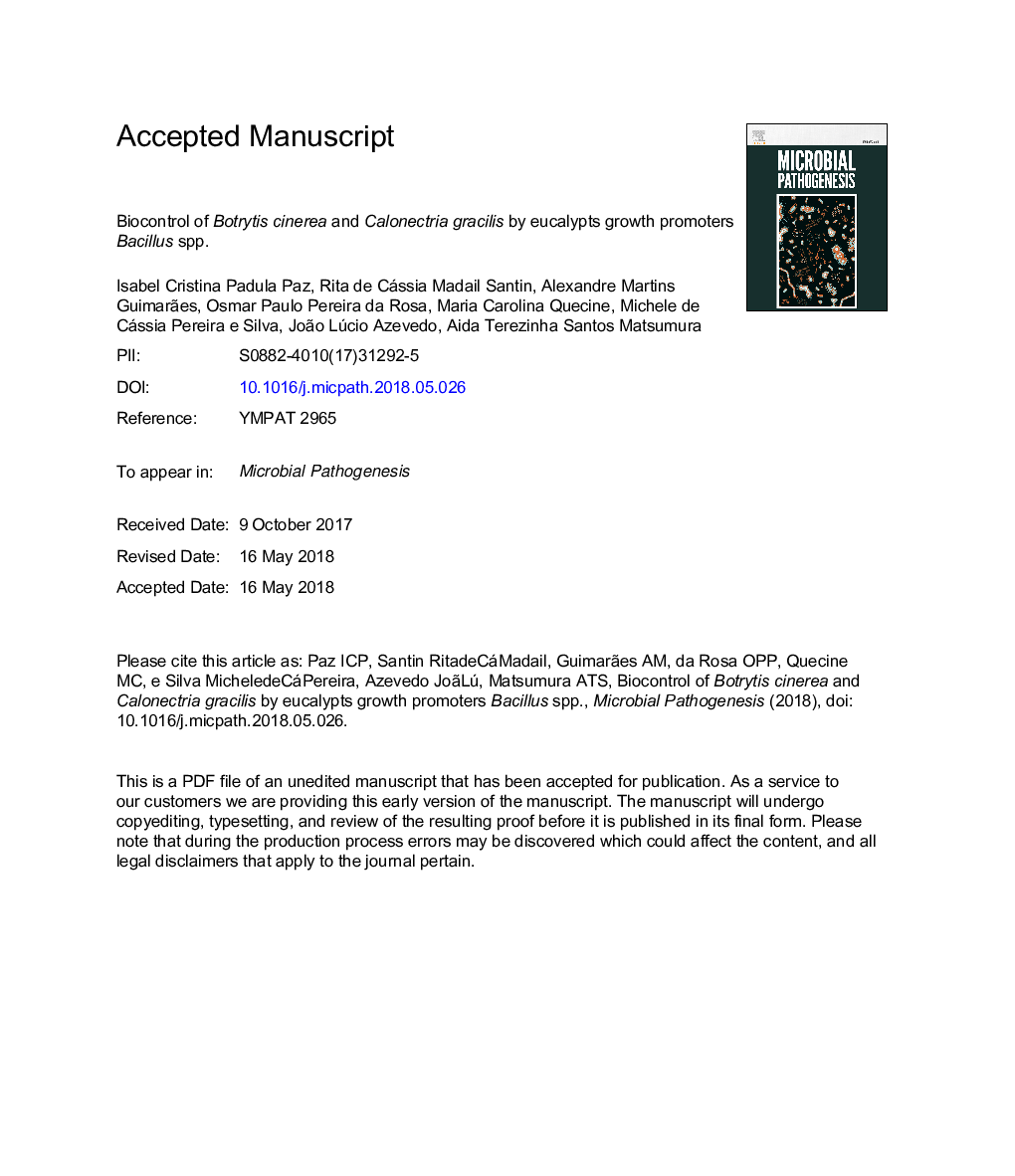| Article ID | Journal | Published Year | Pages | File Type |
|---|---|---|---|---|
| 8749342 | Microbial Pathogenesis | 2018 | 22 Pages |
Abstract
The clonal Eucalyptus plants are commonly obtained by vegetative propagation under a protected environment. This system improves the Botrytis cinerea and Calonectria spp infection on the young eucalypts plantings, resulting gray mold and cutting rot respectively. Currently, the unique available control method is based on chemicals. As alternative, novel methods to manage plant diseases, endophytic microorganisms could be an interesting alternative. Thus, we aimed to evaluate endophytic Bacillus isolated from eucalypts as a biocontrol agent against Botrytis cinerea and Calonectria gracilis, important fungal pathogens in the greenhouse, using clonal plantlets of E. urograndis. Eight endophytic strains of Bacillus, previously described as eucalyptus growth promoters, were evaluated in vitro and in vivo against Botrytis cinerea and Calonectria gracilis. The diffusible metabolites assay showed the potential of endophytic Bacillus to decrease the growth of both pathogens. Differences in the susceptibility of the pathogens to bacterial volatile metabolites were observed, B. cinerea showed more susceptible than Calonectria gracilis. In vivo assays, Bacillus amyloliquefaciens EUCB 10 demonstrated better overall reductions in these diseases. Based on the results obtained from the in vitro and in vivo analyses, we suggest that the endophytic B. amyloliquefaciens strain EUCB 10 constitutes a promising biocontrol agent against B. cinerea and Calonectria gracilis. Furthermore, this is the first reporting of B. amyloliquefaciens previously describe as plant growth promoter and also as potential control agent of B. cinerea and Calonectria gracilis to eucalyptus.
Related Topics
Life Sciences
Immunology and Microbiology
Microbiology
Authors
Isabel Cristina Padula Paz, Rita de Cássia Madail Santin, Alexandre Martins Guimarães, Osmar Paulo Pereira da Rosa, Maria Carolina Quecine, Michele de Cássia Pereira e Silva, João Lúcio Azevedo, Aida Terezinha Santos Matsumura,
